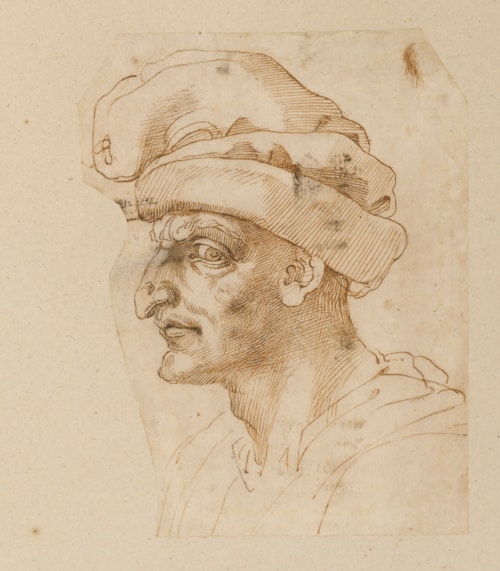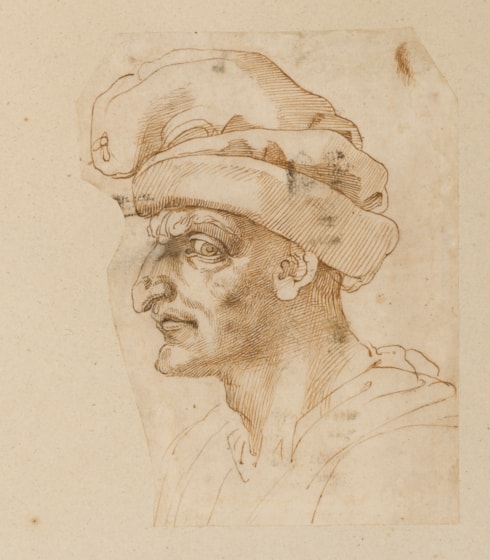
Battista FRANCO
Venice c.1510 - Venice 1561
Biography
A painter, draughtsman and engraver, Battista Franco was born and raised in Venice (throughout his career he signed his paintings ‘Baptista Veneziano’), where he was probably a pupil of his father Jacopo, a painter. Battista spent the first years of his independent career in Rome, where he arrived at the age of twenty. In April 1536 he worked with Raffaello da Montelupo on the decoration of the Ponte Sant’Angelo for the entry of Charles V into Rome, and later that month settled in Florence, where he was engaged on the ephemeral decorations for the wedding of the Grand Duke Cosimo I de’ Medici and Eleanora of Toledo in 1539. Franco was back in Rome by 1542, when he painted a fresco of The Capture of Saint John the Baptist for the Oratorio di San Giovanni Decollato; a work that, like much of his youthful oeuvre as a painter, shows the distinct influence of Michelangelo.
In 1545 Franco was summoned by Duke Guidobaldo II da Montefeltro to Urbino. He worked there for about six years, painting frescoes in the tribune and apse of the Duomo which were later destroyed in the collapse of the cathedral in the 18th century. While in Urbino he also executed numerous designs for the majolica factory at nearby Casteldurante and trained the young Federico Barocci. The last ten years of Franco’s career, from around 1552 onwards, were spent in his native Venice. Among his most significant works in the city are an altarpiece of The Baptism of Christ for the Barbaro chapel in the church of San Francesco della Vigna, as well as the ceiling decoration of the Sala dell’Estate in the Fondaco dei Tedeschi. He also worked at the Biblioteca Marciana, the Palazzo Ducale and the Libreria Vecchia. One of his final projects was the fresco decoration of the Grimani chapel in San Francesco della Vigna, left unfinished at his death and eventually completed by Federico Zuccaro. After Franco’s death, the contents of his studio passed to his illegitimate son, the printmaker and publisher Giacomo Franco.
Battista Franco is better known, and has usually been more highly regarded, as a draughtsman than as a painter, and modern scholars such as A. E. Popham have praised ‘Franco’s extraordinary skill as a draughtsman, with his rather scratchy but effective line, and his combination of Michelangelesque and Raphaelesque forms’. He was one of the most prolific of Cinquecento draughtsmen, and some five hundred drawings by him survive, of which the largest and most significant extant group, numbering just over a hundred sheets, is in the Louvre. The artist also produced a corpus of around 125 prints, which brought him much commercial success.



